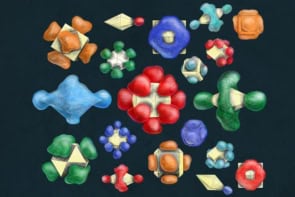Japanese physicists have created a model bull just 10 micrometres long - about the size of a red blood cell. The 'micro-bull' illustrates the potential of a new microfabrication technique that could be used to make optoelectronic devices, micromachines and drug-delivery systems, according to Satoshi Kawata and co-workers of Osaka University (S Kawata et al 2001 Nature 412 697).

The Osaka team used a technique known as photopolymerization – in which the absorption of light causes a polymer to solidify – to create the micro-bull in a block of commercially available resin. By using two-photon photopolymerization, the team was able to beat the diffraction limit and create structures with a spatial resolution of about 120 nanometres, even though the laser used had a wavelength that was more than six times longer. This feat is possible thanks to the nonlinear relationship between the polymerization reaction and the light intensity.
Kawata and co-workers chose to make a micro-bull purely for demonstration purposes: ‘People can easily compare our fabrication with the actual image in their mind,’ said Kawata. ‘The micro-bull also clearly shows the unique power of two-photon photopolymerization: three-dimensional capability and high spatial resolution.’
The team also used the technique to make the smallest ever functional micromechanical system – a spring with a diameter of only 300 nanometres. Two-photon polymerization was developed by Kawata’s team in 1997.



